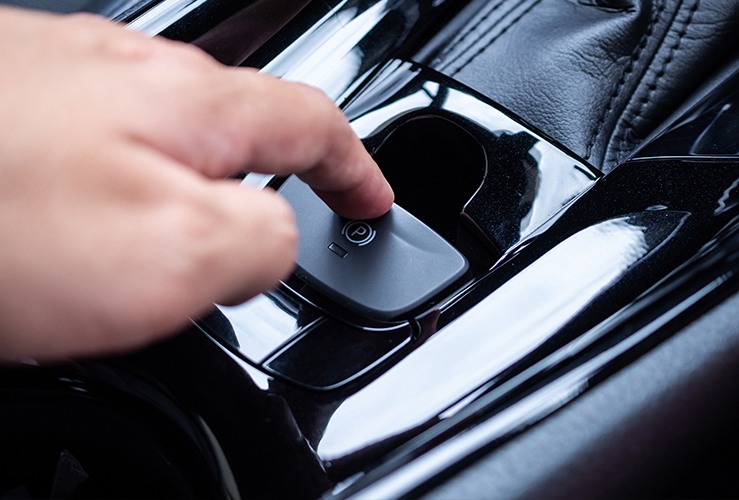If you've recently purchased a new car, or you're about to trade in an older vehicle, chances are you'll come face-to-face with the electronic parking brake - Also known as the electronic handbrake.
This piece of tech replaces the traditional hand-operated parking brake, invariably located between the driver and passenger seats.
With the old system, you simply pulled the handbrake which would pull two cables, locking the two brake pads against the brake discs, firmly holding the rear wheels in place.
Some systems have separate handbrake drum-brake shoes, and some even utilise an individual disc-brake caliper.

The electronic handbrake replaces the older mechanical technology with a simple button.
When the electric handbrake button is pressed, special motors are operated which press the brake pads onto the brake discs. This system is more reliable than the traditional handbrake.
It can be especially reassuring for those who tow.
On most cars with electronic parking brakes, the brakes are released automatically as soon as you try to drive off.
With a minority of systems, you must press the brake pedal and disengage the handbrake switch in order to release it.
Are electric parking brakes common?
Electronic parking brakes are now fitted to many new cars.
The very first electric parking brake system appeared in the BMW 7-Series back in 2001, since when, numerous other carmakers have added similar systems to their model ranges.
Numerous modern cars now feature electronic parking brakes with a hill-hold function, which makes hill starts much easier, and less stressful.
Electronic parking brakes with ‘auto-hold’ enable the brakes to be applied in an emergency.
This system is considered safer than traditional handbrakes, particularly when operated at speed.
Applying manual brakes at speed could result in losing control of the vehicle. By contrast an electronic parking brake with ‘auto-hold’, brakes in a controlled and safe manner, by opening and closing the brake callipers several times to bring the vehicle to a halt.
Many electric parking brake systems include a child lock, meaning the brake system cannot be activated while the ignition is off.
With an electronic handbrake, brake pads must be changed by a professional mechanic, mainly because a special diagnostic laptop is required for the task. Like any system, an electronic parking brake can malfunction, and, since it is a relatively new technology, replacement parts can be expensive.
Having a suitable breakdown cover policy in place will offer you peace of mind should you experience issues with your electric handbrake which renders your vehicle unmoveable.
Naturally, performing handbrake turns was never a good idea from a safety standpoint, but with an electronic handbrake this maneuver becomes impossible. Bad news for the future of rally driving, perhaps.
Are electronic parking brakes here to stay?
Electronic parking brakes are easier and safer than their traditional counterparts, and free up space between the driver and passenger seats for storing belongings - or more gizmos. As time goes on they are likely to become ubiquitous.




